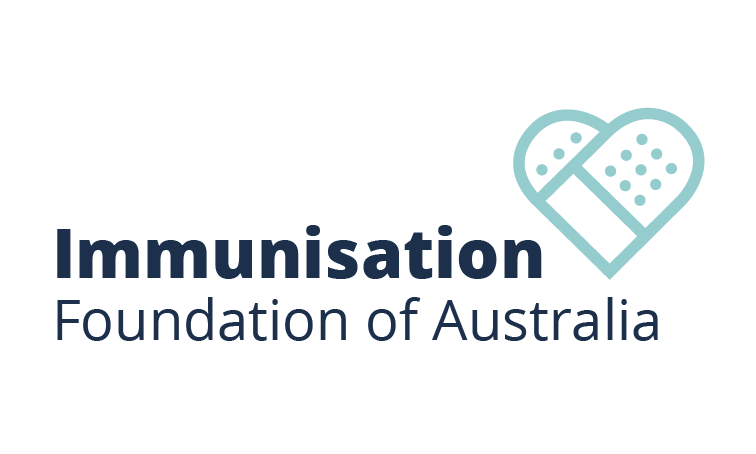Across Australia, we need to raise awareness of the serious risks posed by pneumococcal disease, a bacterial infection that can lead to life-threatening conditions such as pneumonia, sepsis and meningitis.
Because pneumococcal disease has the potential to quickly escalate from mild illness to severe medical emergency, prevention and early intervention are essential to minimise harm and save lives.
In addition to raising awareness, the Immunisation Foundation of Australia is advocating for nationwide access to new vaccines to ensure Australians at greatest risk receive optimal protection against pneumococcal disease.

Pneumococcal disease refers to a range of infections caused by a bacterium known as Streptococcus pneumoniae.
Many parts of body can be infected and resulting disease can be severe, including pneumococcal pneumonia, pneumococcal sepsis (bacteraemia) and meningitis.
Pneumococcal disease is a leading cause of serious illness and death among children. Globally, it is estimated that approximately one million children die due to pneumococcal disease every year.
While pneumococcal disease can impact anyone, young children and people aged 65 years and older are at high risk of severe illness.
Pneumococcal disease can manifest in several forms, each with varying symptoms and health impacts. Common types include:
Sinusitis: Infection of the sinuses, causing facial pain, nasal blockage, headache.
Otitis Media: A middle ear infection, common in children, resulting in ear pain, fever, irritability, hearing loss.
Pneumonia: An infection of the lungs that can result in fever and chills, rapid or difficulty breathing, chest pain.
Empyema: Infection in the space between the lung and chest wall, presenting similar symptoms as pneumonia.
Bacteraemia: Bloodstream infection that can lead to sepsis, with symptoms like fever and chills, low alertness and sometimes a rash.
Meningitis: Infection of the membranes covering the brain and spinal cord, resulting in a back arching (in young children), stiff neck, fever, headache, sensitivity to light, confusion, sometimes vomiting.
Transmission and Risk Factors
Pneumococcal bacteria commonly reside in the nose and throat without causing illness. However, when the immune system is unable to control the bacteria, it can multiply unchecked and spread to other parts of the body.
The bacteria can spread from person-to-person through close contact, coughing and sneezing.
While anyone can contract the disease, certain factors increase the risk of severe illness, including age, underlying health conditions, and living in crowded environments. Aboriginal and Torres Strait Islander populations also have higher rates of invasive pneumococcal disease.
Prevention of Pneumococcal Disease
The most effective way to prevent pneumococcal disease is through vaccination. The National Immunisation Program (NIP) provides free pneumococcal vaccines for various age groups, including infants and older adults.
You can find out if you’re up-to-date with pneumococcal protection by:
✔️ Talking with your GP
✔️ Talking with your pharmacist
✔️ Accessing your Immunisation History Statement via the Express Plus Medicare App
In addition to vaccination, practicing good hygiene – such as regular handwashing and covering your mouth when coughing – can help reduce the spread of pneumococcal disease.
If you would like to learn more about protecting yourself and others against pneumococcal disease, speak to your GP or immunisation provider.
The National Immunisation Program (NIP) provides free pneumococcal vaccines for various age groups, including infants and older adults.
Diagnosis and Treatment
Diagnosing pneumococcal disease depends on the infection site, and may include urine, blood, and cerebrospinal fluid analyses.
Treatment typically consists of antibiotics, with early diagnosis crucial to reduce the risk of complications. However, antibiotic resistance is a growing concern, highlighting the importance of vaccination.
The Immunisation Foundation of Australia is calling on everyday Australians, healthcare professionals and policy makers to Prioritise Pneumococcal Protection.


FREQUENTLY ASKED QUESTIONS
-
Before the introduction of a pneumococcal vaccine in the early 2000s, pneumococcal disease was a leading cause of illness and death in young children and older adults.
However, since the vaccine was added to the National Immunisation Program (NIP), the incidence of invasive pneumococcal disease (IPD) has decreased significantly. Despite this, young children and the elderly remain at higher risk of pneumococcal disease.
In 2024, there have been more than 2,200 cases of IPD. Because IPD represents the most severe cases of pneumococcal disease, such as meningitis, this is the tip of the iceberg when it comes to all cases of pneumococcal infections in Australia.
-
Because pneumococcal disease can affect almost any part of the body, it can have a variety of health impacts and therefore symptoms. A list of common types of pneumococcal infections and their symptoms can be found above.
-
The most effective way to prevent pneumococcal disease is through vaccination.
Pneumococcal vaccines are provided free through the National Immunisation Program for Australians of different ages and circumstances. These include:
All children at 2, 4 and 12 months of age.
An extra dose at 6 months for Aboriginal and Torres Strait Islander children living in
Queensland, the Northern Territory, Western Australia or South Australia.
All Aboriginal and Torres Strait Islander people aged 50 years or over.
All non-Aboriginal and Torres Strait Islander people aged 70 years or over.
People who have medical conditions that put them at higher risk.
More information is available from the Department of Health and Aged Care.
-
Pneumococcal vaccines are provided free through the National Immunisation Program for Australians of different ages and circumstances
To find out if you’re eligible, click here or speak to your doctor or pharmacist.
-
Infants can receive a pneumococcal vaccine at the same time as other vaccines listed in the infant immunisation schedule. However, there is a small increase in the risk of fever if one form of pneumococcal vaccine is given at the same time as an inactivated influenza vaccine.
Your immunisation provider can provide further information.
Adults can receive a pneumococcal vaccine at the same time as a herpes zoster vaccine, seasonal influenza vaccine, RSV vaccine or COVID-19 vaccine if required.
THE FACTS
Tap or click on the short reels below to download and use on your own social media platforms.



















